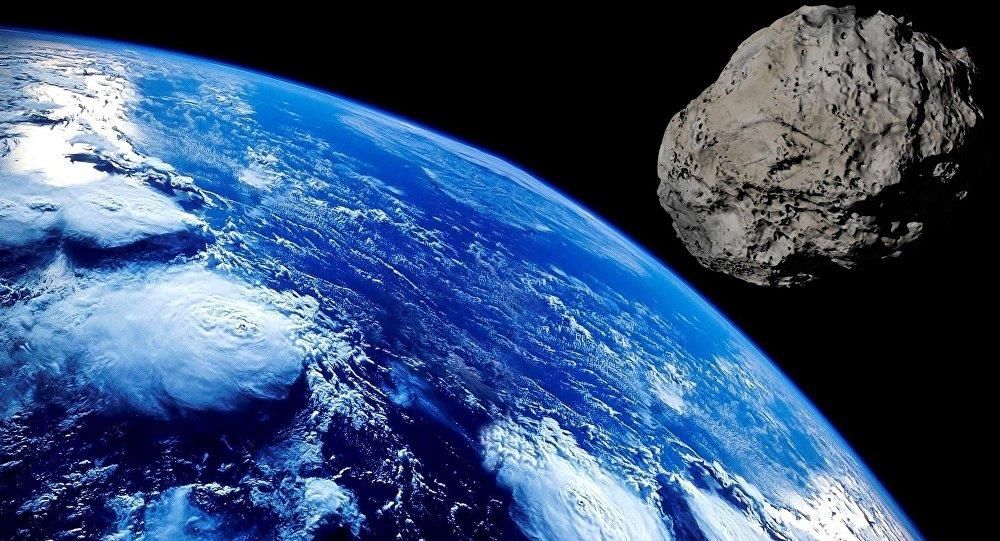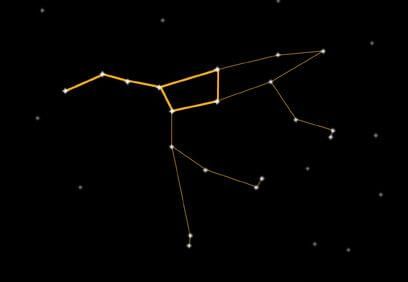Our Universe: Solar System and The Moon(Part - 3) Class 5 Notes EVS
Other Heavenly Bodies
Asteroid:

Fig: Asteroid
Large number of small bodies that fills the gap between the orbits of the Mars and Jupiter and revolve around the Sun like other planets. Asteroids are called as minor planets because it has its own orbit and its size varies from kilometer to few hundred kilometers. About 3500 asteroids are orbiting the Sun.
Comets
Meteors and Meteorites
Commonly Asked Questions:
1. Which one of the following statements is correct?
(a) Asteroids are the part of our solar system
(b) Asteroids are not the part of our solar system
(c) Asteroids are the satellites of planet saturn
(d) Asteroids are the satellites of planet venus
(e) None of these
Answer: (a)
Explanation
Asteroids are the part of our solar system. Therefore, option (A) is correct and rest of the options is incorrect,
2. Which one of the following statements is correct about comet?
(a) Comet revolves around the sun
(b) Comet is a part of our solar system
(c) A comet has many moon
(d) Both A and B
(e) None of these
Answer: (d)
Explanation
Comets are part of our solar system which revolves around the sun. Therefore, option (D) is correct and rest of the options is incorrect.
Constellation
If we see night sky, we find certain patterns of stars resembling living creatures or inanimate objects. Such groups of stars are called as constellation. Each constellation is named after their resemblance with specific things. For example Orion is a group of stars resembling a hunter (Orion means hunter).
 Fig: A Group of stars (Constellation)
Fig: A Group of stars (Constellation)
Constellations are not real
| Name of the constellation | Shape | When visible in the sky |
| Onion | Hunter | Winter |
| The Big Dipper | Ladle | Early in the morning and early in the evening all year round |
| Ursa major (great bear) | Plough | Throughout the year |
| Ursa minnor (Little dipper) | Ladle | Throughout the year |
The star at the end of the dipper handle is pole star. It is the brightest star in the constellation.
Pole star is called as Polaris. It lies on the earth's axis of rotation and hence its apparent position doesn't seem to change. It looks exactly over our head when seen from the poles.
Commonly Asked Questions
1. The cause of the extinction of the dinosaurs could be.
(a) Collision of asteroids
(b) Collision of meteors
(c) Collision of meteorites
(d) Collision of comets
(e) None of these
Answer: (a)
Explanation
Many scientists believe that asteroid collided with our planet. As a result huge amount of dust was released that might had covered the Earth's surface, cutting off sunlight for long periods of time. These finally led to extinction of many species including dinasaurs from the Earth. Therefore, option (A) is correct and rest of the options is incorrect.
Space Mission
A young Russian pilot named Yuri Gagarin became the first person to orbit around the earth in a small capsule called vostok 1.
Valentina Tereshkova was the first woman to go into space in vostok 6 In 1963.
Sally Ride, the first American woman to go in space in 1983.
Alexel Leonov took 10 minutes space work on 18"' march 1965 in vostok 2.
Neil Armstrong was the first person to step on the moon in Apollo 11 with Edwin Aldrin
Laika, a dog was the first living organism who spent seven days in space in sputnik 2.
Commonly Asked Questions
Which was the first manned satellite to orbit the earth?
(a) Vostok 1
(b) Sputnik 2
(c) Vostok 6
(d) Sputnik 1
(e) Apollo 11
Answer: (a)
Explanation Vostok 1 was the first manned satellite to orbit the earth. It was launched by Russia on 12 April 1961- Therefore, option (A) is correct and rest of the options is incorrect.
Which of the two astronauts accompanied Nell Armstrong to land on to the moon's surface in 1969?
(a) Michael Collins, James Irwin
(b) David scot. Buzz Aldrin
(c) Edwin Aldrin, Michael Collins
(d) Alexi leonov, David scot
(e) James Irwin, David scot
Answer: (C)
Explanation
Edwin Aldrin and Michael Collins accompanied the Neil Armstrong who made the first manned landing on the lunar surface, iames Irwin and David scot drove the battery powered buggy over the moon's surface.
Therefore, option (C) is correct and rest of the options is incorrect.
You Must Know
- Ham (the chimpanzee) and alike (dog) were just 2 animals out of many who travelled into space.
- There are 3 space shuttles in use today Discovery, Atlantic and Endeavour.
- Challenger exploded in 1986 and Columbia shuttle exploded on entering the earth's surface. Kalpana chawla was one of the astronauts who died in that tragedy.
- To escape from earth’s gravity rocket has to gain speed of about 40,000 kmph.
|
10 docs|23 tests
|
FAQs on Our Universe: Solar System and The Moon(Part - 3) Class 5 Notes EVS
| 1. What is the composition of the moon? |  |
| 2. How far is the moon from the Earth? |  |
| 3. What is the significance of the moon's gravitational pull? |  |
| 4. Can humans survive on the moon without any protective gear? |  |
| 5. How does the moon affect Earth's rotation? |  |
















